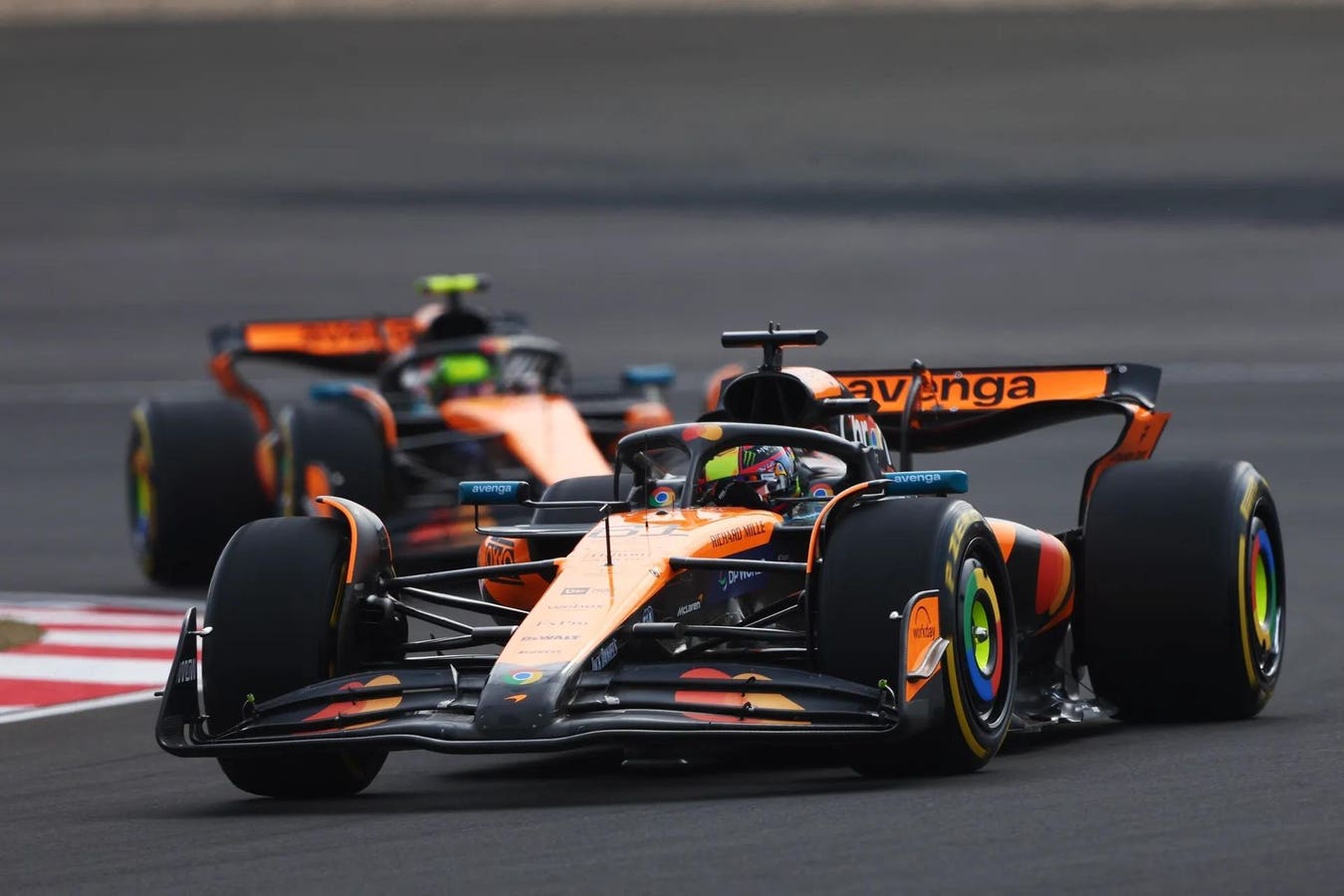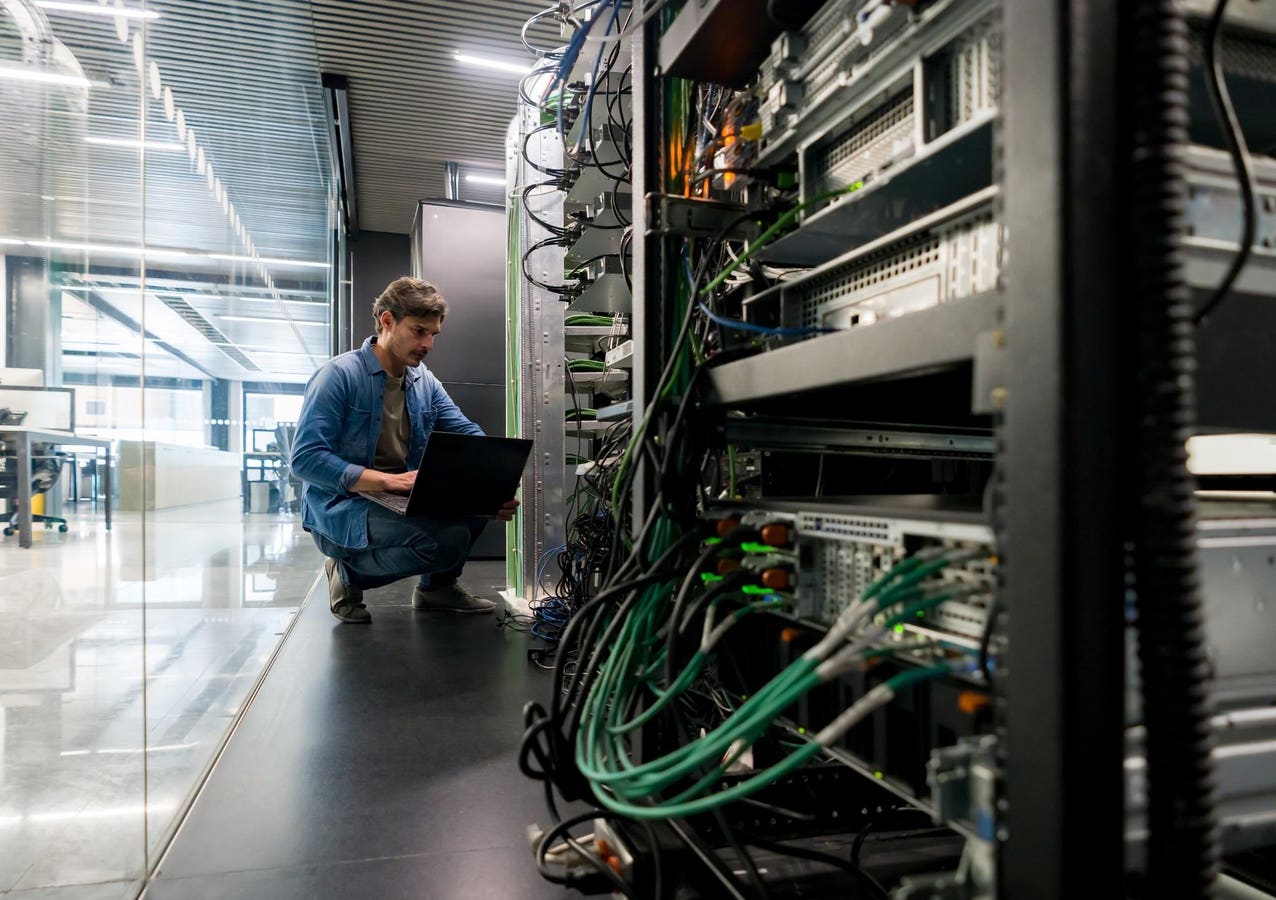Avenga has recently inherited a partnership with the McLaren Formula 1 team
Most automakers are starting to get to grips with electrification. But the parallel revolution of software is still proving problematic. In March, Volkswagen’s Cariad software division announced 1,600 layoffs, a third of its staff, as this area continued to be a thorn in the side of the group since it caused significant delays in the launch of the ID.3 in 2020. Avenga wants to change that and give European car producers the software leadership to match the engineering prowess they have enjoyed for decades. I talked to Avenga CEO, Ludovic Gaudé, about how his company plans to turn keep Europe’s cars competitive.
The New Avenga
“Avenga is an aggregate of 12 companies with the view of building one of the largest software development organisations in Europe,” says Gaudé. “The idea of the investment behind Avenga is that obviously everything is going digital nowadays, but most of the companies that are extracting value from this are outside of Europe. We wanted to create a European-led company focusing on this and supporting not only European clients, but also outside Europe with the European mindset.”
The Avenga name comes from one of the 12 companies that came together. Previously the group had been called Qinshift, but this seemed like a difficult brand to use internationally, whereas Avenga is simpler to pronounce. The main idea of Qinshift remains, however, and that is about shifting the way companies approach software together. For automotive, that means the rise of the Software Defined Vehicle (SDV), but that isn’t the only area Avenga is working on.
European automakers have had trouble delivering the software integration championed by companies … More
“We are not only an automotive company,” says Gaudé. “It’s about 25% of our business. The rest is more around Telco, media, banking, and retail. We are building software from the more front end-related mobile web all the way down to where the algorithm and the intelligence are being built on the back end. We also develop embedded software closer to the to the silicon and this is where it comes into play with automotive because you must tackle the different dimensions of the SDV. A lot of this comes from thinking about what people are going to do in their cars now because they are autonomous and highly connected. There’s a lot of lot more that people can do in their in their cars so you need to have a platform that allows that.”
Gaudé draws a parallel with what happened in the smartphone business around 20 years ago, which didn’t go well for incumbent brands. “Telco operators had access to all the data, all the geolocation, and they knew exactly the behavior of all of us in Europe or elsewhere,” he argues. “But they couldn’t do anything with it. They were completely bypassed by the likes of Google. This is what the automaking OEMs are afraid of. When Tesla came into the market, all the CEOs of the European car manufacturers had the same approach as Nokia had in 2006 when iPhone was launched.” They thought Tesla would find it’s not as easy as it thought to build cars. “But Tesla looked at the problem in a completely different way. There is this joke about software on wheels. This is what Tesla has been promoting, but the car manufacturers saw what happened with the telcos. They’re trying not to become a dumb pipe or piece of hardware. However, it has proven to be very difficult for them to put this in motion.”
Avenga: Solving Europe’s SDV Conundrum?
The troubles at Cariad exemplify this. “They are experiencing problems because two thirds of their people are used to working in a certain way,” say Gaudé. “Their development cycle is very linear, not agile at all. They are trying to mimic what others are doing, but what they should be doing is getting rid of the entire team and starting from zero. They are not doing that and now what they are pursuing is more a path of reducing costs, so it’s been extremely difficult.”
The Volkswagen ID.3 was plagued with software problems that delayed its launch.
There are some positive signs, however. “European car manufacturers all have EVs,” says Gaudé. “They all have software in their in their vehicle. You see the screens are becoming bigger. The use cases are becoming wider. You see the use of more modern technologies to provide more safety for drivers. You have tools that are observing the angle of your eyes, or to see if your eye is closed or not and then shaking the wheel if something goes wrong.” They are also providing over-the-air software updates like smartphones and computers. “They are making a step forward.”
However, Tesla isn’t the only threat anymore. Chinese automakers have also been quicker to adopt the SDV approach, and are even starting to challenge the latest Tesla Model Y. “You have a similar vehicle to a Porsche coming from China that is costing a quarter of what it cost in Germany,” says Gaudé. “It’s been super hard for the European OEMs, for fear of cannibalization, to jump with two feet into this space.”
Chinese challengers like Xiaomi are delivering Porsche-like performance for a much lower price
This is where Avenga plans to help European OEMs compete. “We are not a hardware company,” says Gaudé. “We are pure software. We help with designing new user experiences within the car. For example, there is no reason why inside a car all the seats need to be directed to the front. You could have a table inside and once they become autonomous you could play Poker. This is how things could change. We are also working on safety and driving mechanisms to help car manufacturers develop solutions that are not completely autonomous but that will assist people in driving.”
Avenga is also helping to develop software that optimizes the manufacturing phase. “You can take preventive actions to maintain the production facility before it’s too late,” says Gaudé. “AI models can help with that. We are also working with them on business models because most of the time your car is sitting in the garage doing nothing.” This includes car sharing and related capabilities like automatic parking. “The entire concept around mobility extends beyond the SDV.”
Gaudé sees another fundamental shift in the automotive industry on the horizon, partly enabled by autonomous driving and AI. “It’s hard to know if it’s going to happen next month or in a year from now,” he says. “Some say AI will be replacing the human. The AI is going to be the main driver, and the human will be assisting the AI. It will take the task on its own and ask a human to help when needed.”
One of Avenga’s biggest European clients so far is Skoda, where cameras at the production line detect manufacturing defects and provide preventative maintenance to fix them before the vehicle is released for sale. Avenga is also helping Skoda with using mobile phones as a key and connectivity for over-the-air software updates.
Avenga Partnership With McLaren F1
However, the first place you’re likely to see the Avenga brand is likely to be on a McLaren Formula 1 car. “We have taken advantage of passthrough sponsoring from one of our sister companies called Allwyn,” says Gaudé. However, it’s early days for this partnership. “The relationship just started a couple of months ago. We are exploring with them how we can work on two aspects of their development. One is how they can increase their performance. Lando is winning pole position with around 1/4 of a second, so after 60 laps any tiny detail can add up. You need to be super precise and innovative. We are working with them on how we can expose their data in a way that in real time can have a positive impact on their performance. The other area that is interesting in motorsport is how to engage with the fanbase. We have some experience in creating experiences so that fans continuously feel connected emotionally.”
Avenga hopes to leverage AI to help improve McLaren’s F1 strategy
Avenga also hopes to leverage the latest capabilities of Generative AI for optimizing strategy in Formula 1. “The FIA issues a thick book every year about what to do and not do, and what are the penalties,” says Gaudé. “You can use those data points to help the principal while he’s making course strategies. We are working on this with Large Language Models and the history of FIA interpretation of certain decisions that the drivers or the principals have made. We are working on how to maximize outcomes based on those past experiences. It’s not so easy for a human to do that, especially when you are in a in the middle of the action.”
The question remains how European car software can compete with what American and Chinese companies are now offering, and how much Avenga can contribute. “In order for us not to become a colony of the US or China, when it comes to software, we will have to develop our own,” says Gaudé. “We must step into this this new era. We are living in extraordinary times. As someone who lived through the PC revolution some 30-40 years ago, to mobile, to the Internet, I can see the change is not going to be like the industrial revolution. It’s not going to take years. It’s going to be fast. It’s exciting. And we don’t have a choice, because if we don’t jump into this, we’re going to be left behind.”









